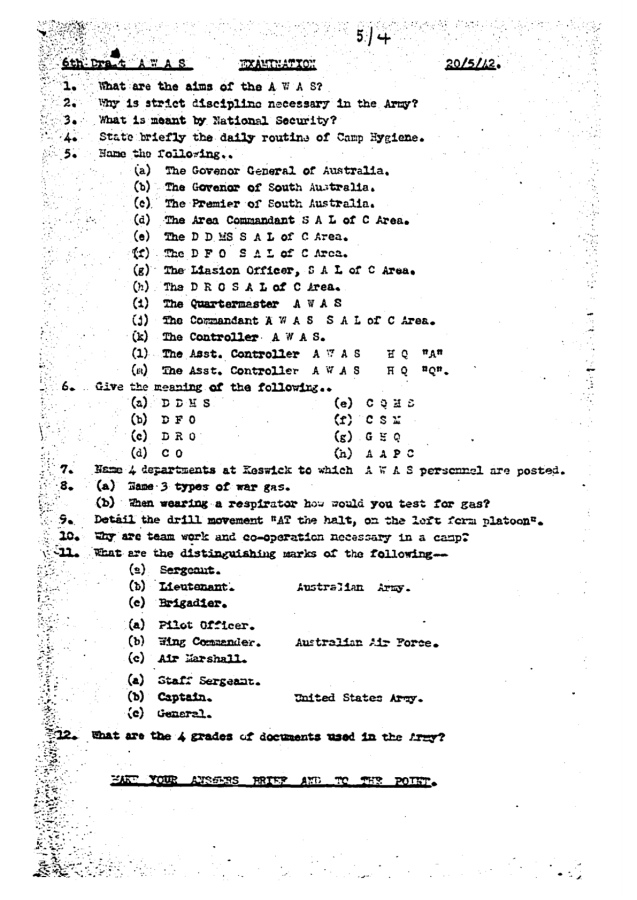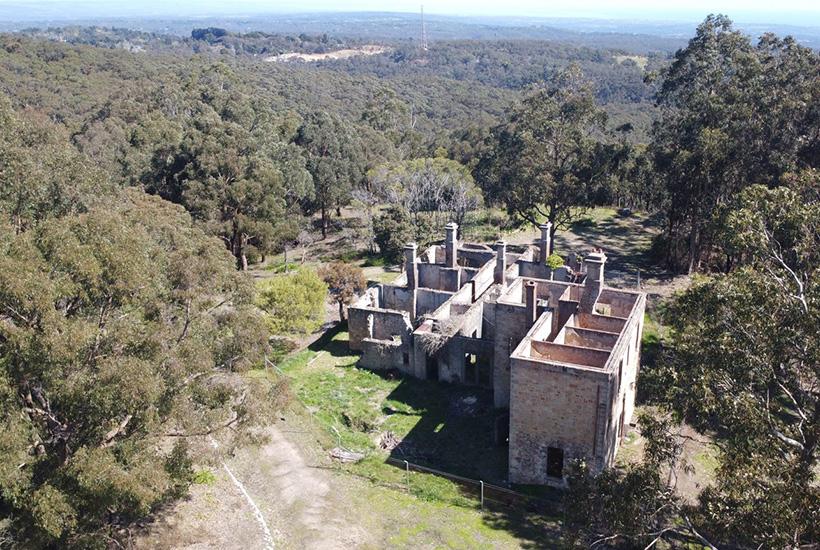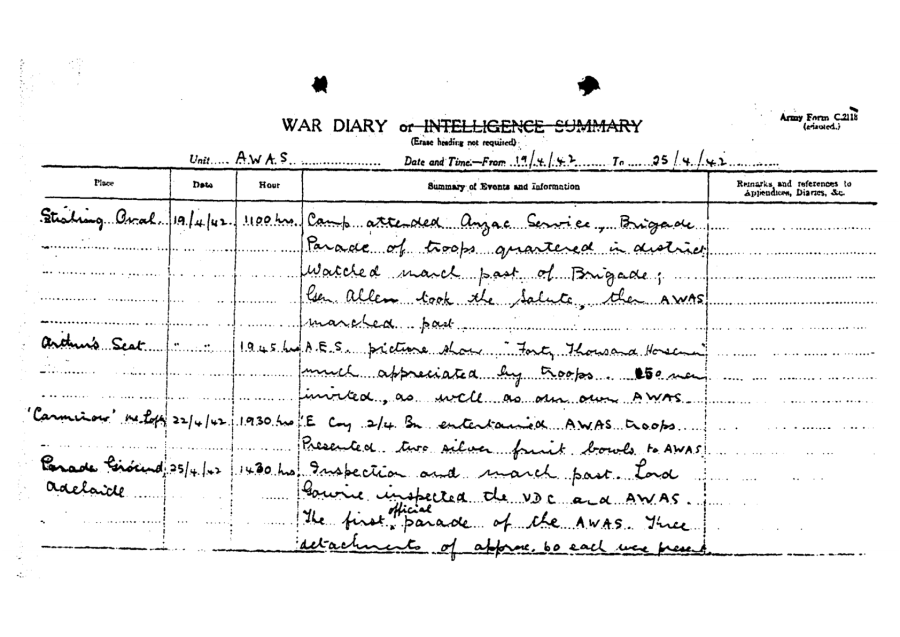Arthur’s Seat and the Australian Women’s Army Service
The Australian Women’s Army Service (AWAS) was formed in 1941 by Sir Percy Spender, who believed women were an underutilised resource in Australia’s war effort. The formation of the AWAS relieved men from certain military duties to serve in fighting units. Duties allocated to women took into consideration their pre-existing skills and career experience. They took up roles as draftsmen, textile repairs, cashiers, cooks and telegraph operators. Training camps for the AWAS were positioned across Australia, with several in South Australia.
Members of the Australian Women's Army Service (AWAS) during a march through Melbourne, VIC in September 1942.
One of these was Arthur’s Seat, an 1875 mansion located in Crafers in the Adelaide Hills that was destroyed during the 1983 Ash Wednesday bushfire. George Tinline had aimed to build a summerhouse to be called Tinline Court, but he was unable to finish it; new owners completed it and gave it its current name. The building later housed a boarding and day school for girls, Stawell School. Arthur’s Seat functioned as an army barracks for a short period in 1942. At least six drafts of women were housed there for training.
The unit diaries of the 4 Military District, Australian Women’s Army Service, reveal the daily life of trainees as well as the process for joining the AWAS.
Women between 18 and 40 could join the AWAS once they completed medical examinations and x-rays, a security clearance, and character background checks. Entry also required submission of an application form and participating in an applicant interview.

6th draft AWAS examination questions
Troops at Arthur’s Seat attended many events while stationed there, including an Anzac Day service, held at nearby Stirling Oval and a Good Friday church parade. The first Army parade in which the AWAS participated was on 25 April at the Parade Ground in the centre of Adelaide. Picture shows were also provided for the women, showing films such as Forty Thousand Horsemen. They also attended picture shows from the army education service, with one session on 5 April attracting 150 troops from the 2/4th Australian Infantry Battalion, as well as the AWAS.
In the diaries, emphasis on natural hazards reflects Arthur’s Seat location in the Adelaide Hills, a region known for its cool winter climate, summer bushfire risk and abundance of wildlife. Early in the occupation of Arthur’s Seat, from 12 to 15 February, a bushfire threatened the property. The fire reached its peak on 14 February, when 30 men and all remaining personnel in the camp worked to protect the building.

Arthur's Seat house was destroyed in the 1983 Ash Wednesday fires. Photographer: McGees Property.
The final unit diary instalments relating to Arthur’s Seat indicate that the sixth draft of 46 women struggled to cope with the cooler climate of Crafers. Reports relayed the “trainees feeling cold very much”. As rainy days became more frequent, beds had to be moved from beneath the broken windows, with comments that the house was “very damp”. Inspections were completed by Major Fraser and other officials, and the troops were ordered to march out to St Margaret’s, Semaphore, a warmer location at the beach. Although the troops at Arthur’s Seat battled with both fire and the winter cold during the short time they were stationed there, the diaries indicate they were able to make lasting associations with other battalions.
Their departure from Arthur’s Seat was felt among other units, revealed in a letter the AWAS received from the 2/4th Battalion. It recounts that the members of the 2/4th had “thoroughly enjoyed the cooperation” with the AWAS, and were “very disappointed that circumstances will prevent a continuation of such fine entertainment.” The letter concludes that the “happy times … at Mt Lofty will be long remembered.”
The diaries recounting the AWAS troops’ time at Arthur’s Seat, Crafers, have been digitised as part of the Memorial’s Second World War Unit Diaries Digitisation project. View the diaries online.



